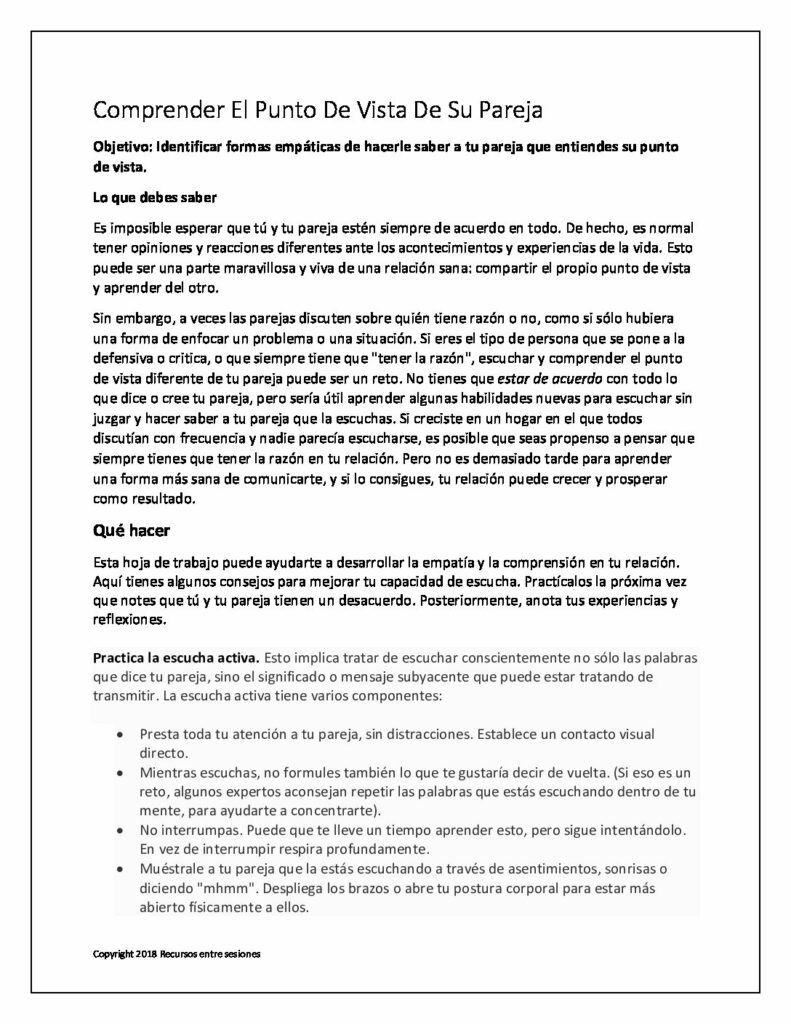The first step to reducing your worrying is to understand this behavior better by identifying the kinds of things you worry about, what triggers them, and how much anxiety they cause you. This worksheet asks you to keep a record of you worries for a one-week period and determine if there are any patterns to your worries and your anxiety. (GAD, Generalized Anxiety Disorder, 1218)
This worksheet is designed to help people develop a positive self-image using 12 assignments including developing a kinder inner voice, understanding what you can control and what you can’t, avoiding comparing yourself to others, and more. (self-esteem, positive psychology, depression, anxiety, 1218)
This worksheet is intended to help couples identify the ways that technology is affecting their relationship. It is also designed to help people identify concrete steps to change behaviors that can interfere with building a trusting and fulfilling relationship. (couples counseling, marital therapy, technology addiction, relationships, 1218)
This worksheet is designed to help people get control over the compulsive behavior that they normally use to decrease their anxiety. It asks them to slowly reduce the time that they spent on their compulsive behaviors reinforcing the sense that they have control of their compulsions if they choose to exert it. (compulsions, OCD, 1218)
This worksheet is designed to help people understand the concept of resilience and focus on the character traits that make them more resilient. (Solution-Focused, positive psychology, self-esteem, 1118)
This worksheet encourages people to make a list of the reasons that they shouldn’t be using alcohol or drugs if they have problems with addiction. They are encouraged to create a list that would be visually appealing so that they will look at it often. (1118)
This worksheet is designed to help people reflect on how they deal with authority figures. It asks people to consider how they have dealt with authority figures as far back as their childhood, and how they are dealing with authority figures in the present. The worksheet also suggests a number of simple assertive techniques. (social anxiety, passivity, shyness, workplace issues, relationships, 1118).
This worksheet is designed to help a person in your family with problems by using a family contract. Creating a family contract will help you addresses your role in your loved one’s struggles, identify the family members specific problems and behaviors, and determine the best strategies for providing useful assistance. A family contract is designed to help a family be proactive in supporting a family member, while still not impeding the person’s sense of self-reliance and self-worth. (contracts, 1118)
This worksheet is designed to help couples find new ways to show that they understand each other’s point of view. Skills covered in this worksheet include: active listening, responding non-defensively, positive communication. (couples communicating, marriage, 1018)
Most people simply accept uncertainty as a natural part of life, but people with anxiety disorders find it hard to accept uncertainty, particularly in certain situations. This worksheet is designed to help people tolerate uncertainty by using a five-step mindfulness technique that can help disengage from anxious thoughts and face uncertain situations without turning to others for help. (GAD, Generalized Anxiety Disorder, exposure, 1018)










